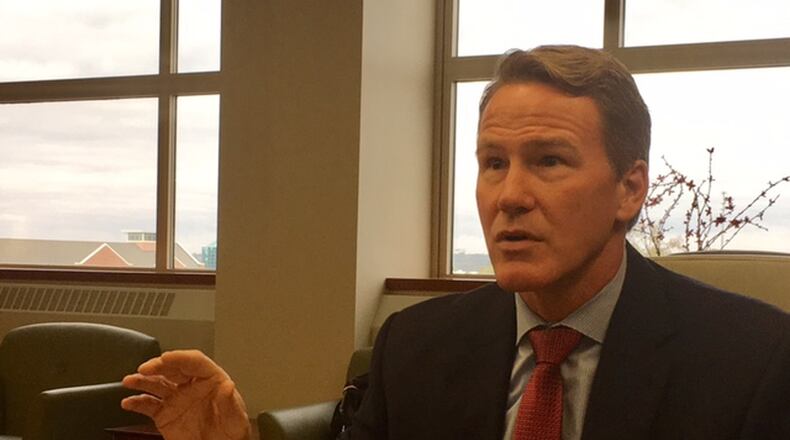Husted has drawn national attention for the state's longstanding policy of removing voters from the rolls who haven't voted in recent years or confirmed their addresses, a policy challenged by the ACLU and other voting rights advocates. The U.S. Supreme Court is expected to weigh in on the policy later this year.
A spokesman for Husted sent us data showing the 141 elections that resulted in a tie vote or a one-vote difference between 2013 and 2017. That data proves Husted's point, but we will explain it in more detail.
Husted is running for lieutenant governor in the May 8 Republican primary. He is the running mate of Attorney General Mike DeWine. Republican incumbent Gov. John Kasich is term limited.
Data on close elections in Ohio
Husted’s data pertains to both local races for office as well as issue-oriented ballot questions.
Issues and ballot questions require a majority vote in order to pass, so in the case of tie votes, the matter fails. In races determining local offices such as city council, in the case of tie votes, winners are determined by lot such as a coin toss or name draw.
While the number of races that resulted in ties or were decided by one vote sounds like a lot in sheer numbers, it doesn’t add up to much when you consider that Ohio has a massive number of local elections in each cycle.
In the November 2017 general election, there were 29 races that resulted in a tie or a one-vote difference.
Statewide, there were about 1,500 local issues on topics such as a levy for cemeteries, road improvements, a fire contract and liquor laws. Some of these elections only drew hundreds of votes in various villages and townships. For example, a bond renewal in Charleston failed with a 41-41 tie.
The Secretary of State’s office didn’t have the total number of all elections on the ballot, but in addition to the local issues, there were also local races for office and statewide issues.
So while we don’t have data to calculate an exact percentage, it’s clear that the 29 races that Husted cited are only a fraction of a percentage of the total number of elections.
Ohio State University assistant professor Vladimir Kogan, who studies state and local government, told PolitiFact that the one-vote threshold isn’t particularly meaningful or more important than other close races.
Some people point to these close elections to justify voter ID laws, arguing that a single fraudulent vote could have decided an election, Kogan said.
However, a single-vote election could just as well be decided by a voter ID law that keeps a single otherwise eligible voter from casting a ballot, he said.
“In other words, close elections increase the importance both of policies that reduce fraud but also of the potential implications of those policies for turnout,” he said.
Husted has cited the one-vote races as part of the justification for maintaining accurate voter rolls.
"When a single vote can have such a big impact in so many places, you can understand why we focus so heavily on accuracy of the voter rolls and the integrity of the elections process, and why we encourage every voter to take their right and responsibility to vote seriously," he said in 2013.
He also cited the one-vote elections when he commented about his investigation that found 82 noncitizens who were alleged to have voted illegally in at least one election.
“Every vote matters, and any illegal vote can have an effect,” he said in 2017.
Our ruling
Husted tweeted “When we say ‘one vote matters,’ it’s not just a saying – it has proven true 141 times in #Ohio over the last five years.”
The tweet linked to a press release that said Husted was referring to races and local questions that resulted in tie votes or a difference of a single vote. Husted’s office provided data showing the 141 races for local office or local issue questions that were decided by that narrow margin between 2013 and 2017.
Husted’s numbers are correct. However, we will note that races this close are very rare in the context of all the elections in Ohio.
We rate this claim True.
Getting the facts
We are now working with PolitiFact, a fact-checking website that rates the accuracy of claims by elected officials and others who speak up in American politics. We will check into what they say and tell you if it’s true or not.
About the Author
